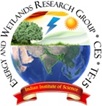 |
Distributed Solar Energy Systems
|
 |
1Energy and Wetlands Research Group, Centre for Ecological Sciences [CES], 2Centre for Sustainable Technologies (astra),
3Centre for infrastructure, Sustainable Transportation and Urban Planning [CiSTUP],
Indian Institute of Science, Bangalore – 560012, India.
*Corresponding author: tvr@iisc.ac.in, emram.ces@courses.iisc.ac.in
|
References
- Balamurugan, P., Ashok, S., & Jose, T. L. (2009). Optimal operation of biomass/wind/PV hybrid energy system for rural areas. International Journal of Green Energy, 6, 104-116.
- Brown, R. E., &Freeman, L. A. A. (2001). Analyzing the reliability impact on distributed generation. IEEE Power Engineering Society Summer Meeting 2, 1013-1018.
- Brown, R. E., Pan, J., Feng, X., & Koutlev, K. (2001). Siting distributed generation to defer T&D expansion. IEEE Transmission and Distribution Conference and Exposition. 2, 622-627.
- Chiradeja, Pathomthat, &Ramakumar, R. (2004). An approach to quantify the technical benefits of distributed generation. IEEE Transactions on Energy Conversion, 19.
- Climate Research Unit, University of East Anglia. Ten Minute Climatology. Retrieved from http:// www.cru.uea.ac.uk/cru/data/hrg/tmc.
- Government of India, Ministry of Power. (2013). Load Generation Balance Report 2013-14. Retrieved from http://cea.nic.in/reports/ annual/lgbr/lgbr-2014.pdf.
- Hafez, Omar, & Bhattacharya, Kankar. (2012). Optimal planning and design of a renewable energy based supply system for microgrids. Renewable Energy, 45, 7-15.
- Ibrahim, Muhammad, Anisuzzaman, M., S. Kumar, S.,& Bhattacharya, C. (2002). Demonstration of PV micro-utility system for rural electrification. Solar Energy, 72, 521-530.
- Jain, Sachin& Agarwal, Vivek. (2008). An integrated hybrid power supply for distributed generation applications fed by nonconventional energy sources. IEEE Transactions on Energy Conversion, 23(2).
- anase Patil, A. B., Saini, R. P.& Sharma, M. P. (2009). Integrated renewable energy systems for off grid rural electrification of remote area. Renewable Energy, 35, 1342-1349
- Kumaravel, S., and Ashok, S. (2012). An optimal stand-alone biomass/solar-PV/pico-hydel hybrid energy system for remote rural area electrification of isolated village in western Ghats region of India. International Journal of Green Energy, 9, 398-408.
- NASA. (2014). Surface Meteorology and Solar Energy Release 6.0 Methodology Version 3.1.2. Retrieved from(httpileosweb.larc.nasa.gov/ sse/documents/SSE6Methodology.pdf).
- NREL GHI data furnished by National Renewable energy Laboratory, 2010.
- Ramachandra, T. V. (2006). Solar energy potential assessment using GIS. Energy Education Science and Technology, 18, 101-114.
- Ramachandra, T. V., & Krishnadas, Gautham. (2012). Prospects and challenges of decentralized wind applications in the Himalayan terrain. Journal of Energy Bioscience. 3, 1-12,
- Ramachandra, T. V., & Shruthi, B. V. (2005). Spatial mapping of renewable energy potential, Renewable and Sustainable Energy Reviews, 11, 1460-1480,
- Ramachandra, T. V., Hegde, Ganesh, & Krishnadas, Gautham. (2014). Potential assessment and decentralized applications of wind energy in Uttara Kannada, Karnataka. International Journal of Renewable Energy Research, 4.
- Ramachandra, T. V., Hegde, Ganesh, Setturu, Bharath, & Krishnadas, Gautham. (2014). Bioenergy: A sustainable energy option for rural India. Advances in Forestry Letters (AFL), 3, 115.
- Ramachandra, T. V., Jain, Rishabh, & Krishnadas, Gautham. (2011). Hotspots of solar potential in India. Renewable and Sustainable Energy Reviews, 15, 3178-3186.
- Vijayapriya, Tamilmaran, & Kothari D P. (2011) Smart Grid: An Overview. Smart Grid and Renewable Energy, 2(4), 305-311. doi: 10.4236/ sgre.2011.24035.
- World Meteorological Organization. (1964). Guide to Meteorological Instrument and Observing Practices, (4th Ed.) (WMO -No. 8). Geneva, Switzerland.
Citation :T V Ramachandra, Ganesh Hegde, 2016, Distributed Solar Energy Systems, January - February 2016 P. Geography and You
|
Dr. T.V. Ramachandra
Centre for Sustainable Technologies, Centre for infrastructure, Sustainable Transportation and Urban Planning (C iSTUP),
Energy & Wetlands Research Group, Centre for Ecological Sciences, Indian Institute of Science, Bangalore – 560 012, INDIA.
E-mail : tvr@iisc.ac.in emram.ces@courses.iisc.ac.in
Tel: 91-080-22933099/23600985,
Fax: 91-080-23601428/23600085
Web: http://ces.iisc.ernet.in/energy
Citation:T V Ramachandra, Ganesh Hegde, 2016, Distributed Solar Energy Systems, January - February 2016 P. Geography and You
Ganesh Hegde
Energy & Wetlands Research Group,
Centre for Ecological Sciences, Indian Institute of Science, Bangalore – 560 012, INDIA.
| |

